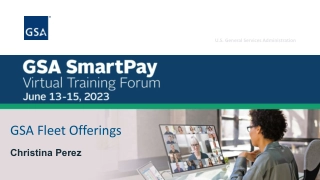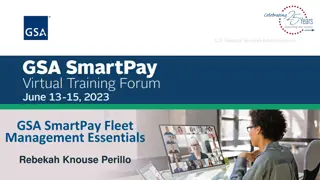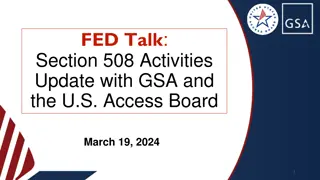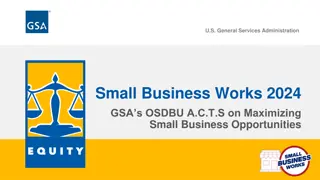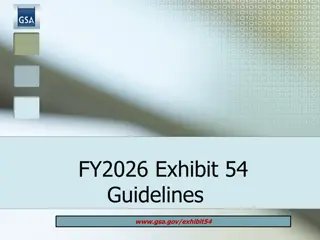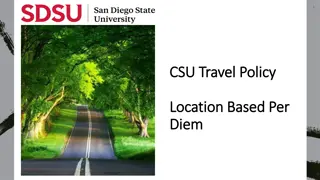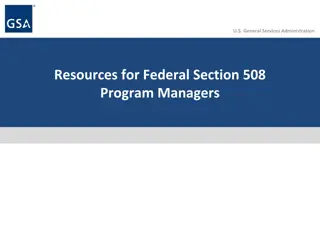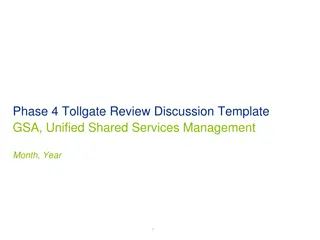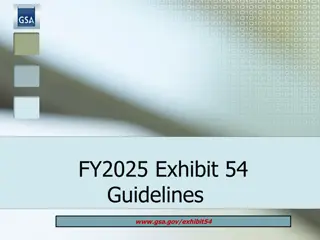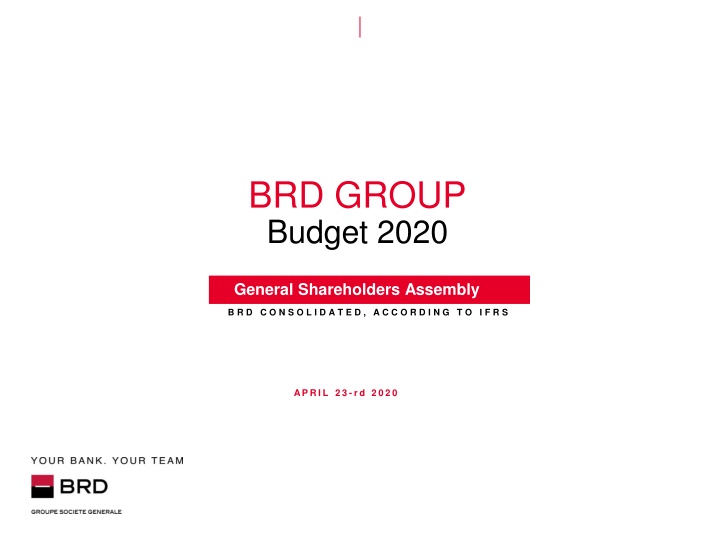
Transforming Banking Business Model for Enhanced Customer Experience and Efficiency
Discover how a leading bank is adapting its business model to meet the evolving needs of customers in a digital age. Learn about strategic initiatives to enhance customer experience, optimize sales and services efficiency, and drive growth through personalized offerings and streamlined processes.
Download Presentation

Please find below an Image/Link to download the presentation.
The content on the website is provided AS IS for your information and personal use only. It may not be sold, licensed, or shared on other websites without obtaining consent from the author. If you encounter any issues during the download, it is possible that the publisher has removed the file from their server.
You are allowed to download the files provided on this website for personal or commercial use, subject to the condition that they are used lawfully. All files are the property of their respective owners.
The content on the website is provided AS IS for your information and personal use only. It may not be sold, licensed, or shared on other websites without obtaining consent from the author.
E N D
Presentation Transcript
BRD GROUP Budget 2020 General Shareholders Assembly B R D C O N S O L I D A T E D , A C C O R D I N G T O I F R S APRIL 23-rd 2020
BANKING ENVIRONMENT DISCLAIMER: This budget document is based on the assumption of rapid regression of the Covid-19 outbreak. Macro-economic assumptions GDP growth reached 7.0% in 2017, 4.1% in 2018 and 4.0% in 2019, driven by private consumption which benefitted from dynamic employment and pro-cyclical fiscal stimulus. Looking ahead, a relatively soft landing scenario appears as the most probable, with GDP growth decelerating to 1.7% in 2020. In a scenario of relatively stable inflation (around 3% from 2020 onwards), interbank rates are expected to remain relatively unchanged. The 2020 budget and the projections up to 2024 are built on a robor 3m assumption of 3.2%, stable compared to H2- 2019. Exchange rate is likely to be under pressure in 2020, considering the need to rein the external shortfall, in a context of deteriorating external competitiveness. End of period exchange rate assumptions : 4.78 for 2019 ; 4.87 for 2020. Lending to individuals expected to continue growing in 2020, but at lower pace Lending to households has been dynamic in the last 3 years, in line with disposable income and private consumption rising trends. Housing loans posted a strong performance (market CAGR of +10.2% 2017-2019). Lending to corporates expected to register moderate increase After contracting almost continuously over the period 2011-2017, loans to corporate sector rebounded moderately in 2018 and 2019. Looking ahead, in a context of economic slowdown, loans to companies are expected to continue to grow at a moderate pace. | P.2 P.2
TRANSFORMING OUR BUSINESS MODEL RETAIL Towards a more customer centric, digital and efficient bank CUSTOMIZE THE VALUE PROPOSITION IMPROVE SALES & SERVICES EFFICIENCY Customized approach per sub-segment on individuals, with Optimize and digitalize processes (in priority lending) Shift from transactional Call Center to Customer Interaction Center (developing sales capabilities) Upgrade self-service capabilities (ATM, MBA) differentiated offers and levels of service, resulting in higher value extraction on Affluent and Higher Mass Market and reduced costs on Lower Mass Market FOCUS ON CUSTOMER EXPERIENCE ENHANCE DISTRIBUTION NETWORK & SERVICE MODEL Optimize footprint (-64 branches in 2020) and increase the size of branches Continue 24H area expansion & roll-out of cashless model Create Customer Journeys Develop Omni-Channel experience CORPORATE Continuously increasing efficiency of the model ENHANCE PROCESSES IMPROVE MARKETING & SALES MANAGEMENT Further streamline and digitalize processes (esp. credit granting and GTB services) Set up sales management tool Structure and roll-out marketing actions Review offers and improve client experience Develop analytics DEVELOP SYNERGIES Continue to develop synergies with retail, specialized affiliates and SG group | P.3
KEY COMMERCIAL TRENDS PER SEGMENT RETAIL CORPORATE Service and sales efficiency improvement Implementation of new retail credit flow to shorten timeline and improve productivity (PI and SB) Build collaboration with 3rdparties Development of business flows Double digit growth expected to continue in electronic payments (transfers & cards acquiring) Acceleration of the development of our Omnichannel platform New regulation (SEPA) to reduce foreign currency payments While traditional commissions are under pressure, new growth drivers (asset management, insurance ) are contributing to offset the decrease fees (to the level of domestic payments) applicable from 2020 Moderate increase of credit volumes Development of positions on small business segment improve in priority daily banking footprint push on credit volumes especially through leasing Credit margins under pressure .to be offset by intensified cross-selling and higher activation of value growth levers Increase in factoring thanks to enhanced processes | P.4
PROFITABILITY EVOLUTION Net banking income Net interest income is expected to benefit from higher lending volume (EOP net outstanding amount of loans growth budgeted at +4.6%*) and positive structure effects, while interest rate effect should turn neutral. Fee and commission income should be impacted by opposite forces: price pressure, with regulatory evolution and competitive constraint negatively impacting daily and transactional banking revenues strong decrease of fee income due to the alignment of the prices of international transfers on domestic ones (SEPA rules) growing volume of transactions development of new growth drivers (insurance, asset management) Operating expenses significant influence of constrained expenditures in 2020 - - - continued pressures on salary costs in a context of double digit increase of average wage on the Romanian market indirect impact of minimum salary increase & evolution of utilities prices negative influence of exchange rate depreciation necessity to increase IT investments in order to accelerate business transformation, while ensuring the delivery of regulatory projects After OUG nr.01/2020 cancelled OUG nr.114/2018 in January 2020, budgeted operating expenses do not include tax on financial assets. Cost of Risk After two years of net release, Cost of Risk is expected to progressively reach a normalized level. * Variation at constant exchange rate | P.5
2020 BUDGET - KEY INDICATORS Budget 2020 Evo Evo A 2018 A 2019 A19/ A18* B20/ A19* 30.4 31.3 +2.3% 32.9 +4.6% Total Net loans (RON bn) 21.7 22.4 +2.4% 23.7 +5.3% Retail 8.7 8.9 +2.0% 9.3 +2.8% Corporate 45.2 45.9 +0.6% 46.3 +0.0% Total Deposits (RON bn) 29.8 30.4 +0.8% 31.6 +3.3% Retail 15.4 15.5 +0.2% 14.6 -6.3% Corporate + + Net loans/deposits 67% 68% 1 ppt 71% 3 ppts * Variation at constant exchange rate | P.6
2020 BUDGET - PROFITABILITY Perspectives for 2020 Evolution 19/18 2018 2019 RON m NBI growth ~+2% Solid NII growth NET BANKING INCOME 3,115 3,270 +5.0% Non-interest income under pressure OPEX quasi stable* OPERATING EXPENSES (1,489) (1,677) +12.7% FINANCIAL RESULTS GROSS OPERATING INCOME 1,626 1,593 -2.0% COR around 35 bp NET COST OF RISK 230 204 -11.6% NET RESULT 1,563 1,499 -4.1% +3.5 pts COST/INCOME RATIO 47.8% 51.3% RATIOS ROE >15% -2.4 pts ROE 21.5% 19.1% *considering the cancellation of tax on financial assets | P.7

